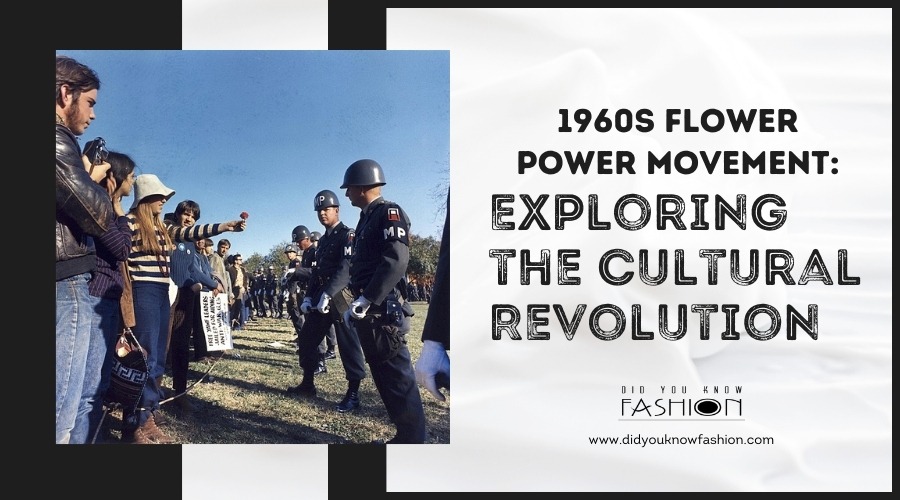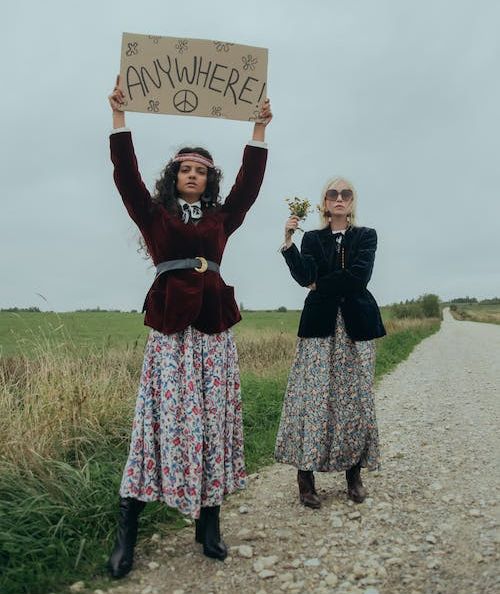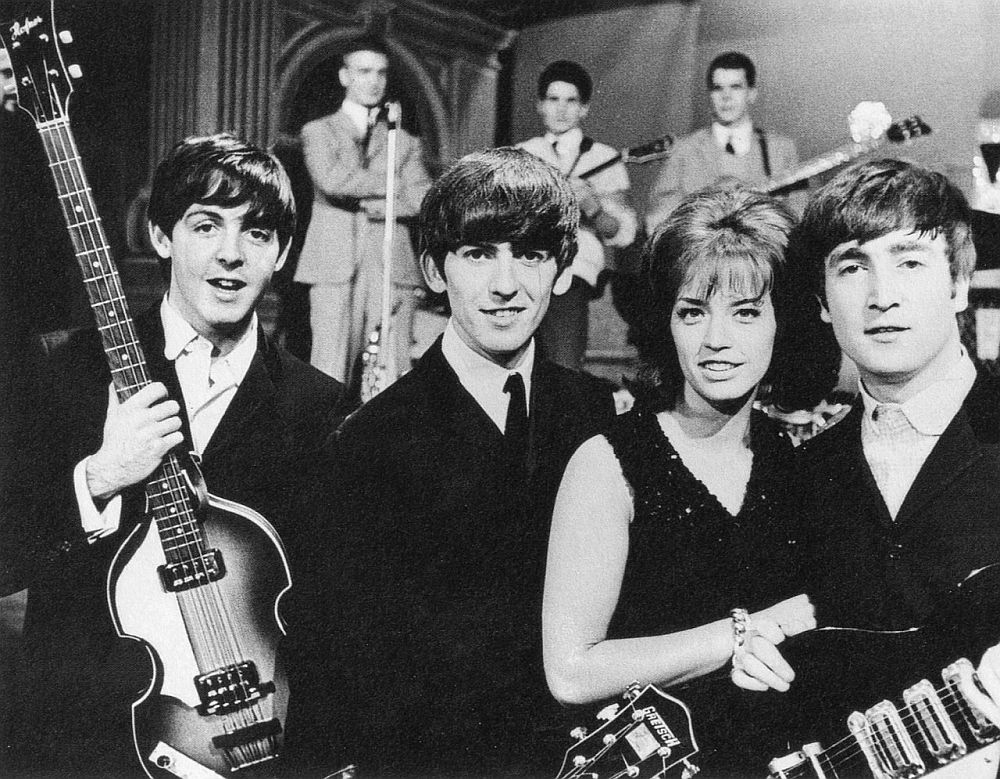During the 1960s, a cultural and social revolution emerged, particularly within the youth of the United States and parts of Europe. This period, marked by an intense upheaval of traditional values, saw the rise of a counterculture that challenged the status quo. One of the most recognizable symbols of this movement was “Flower Power,” a term that encapsulated the ideals of peace, love, and passive resistance.
The concept of Flower Power became a form of nonviolent protest against the Vietnam War, capturing the zeitgeist of the era. It was in the colorful streets of San Francisco that these ideals took root, influencing fashion, music, and the overall approach to political activism. The notion was about transforming public demonstrations into peaceful, positive spectacles, offering an alternative to the prevalent aggression and conflict.
As the counterculture movement gained momentum, Flower Power conveyed a message of optimism and unity. It not only reflected the push for peace but also embodied the shift toward a more open, tolerant society. Flower Power came to represent a generation’s aspiration for a world founded on love and harmony, leaving an enduring imprint on the political and social fabric of the time.
The History and Origins of Flower Power
The term “Flower Power” encapsulates a movement grounded in non-violent ideology and the promotion of peace and love. It became a defining characteristic of the hippie subculture in the 1960s, especially influential in 1968 during the height of the Vietnam War, and marked by the emblematic Summer of Love in the Haight-Ashbury district of San Francisco.
Rise of the Hippie Movement
In the 1960s, the hippie movement began to germinate as a countercultural phenomenon that stood in stark contrast to the mainstream societal norms of the time. It found its roots deeply embedded in the fertile ground of the Beat Generation’s ideals and was nurtured further by the civil rights struggle, opposition to the Vietnam War, and a collective disenchantment with the political and social establishment. Allen Ginsberg, a prominent poet and figure in the Beat Generation, is often accredited with coining the term “flower power” in 1965, urging the use of “masses of flowers” to hand to policemen, soldiers, and politicians as a means of peaceful protest.
Significance of 1968
1968 is often highlighted as a pivotal year for the Flower Power movement. It was a time laden with political upheaval, social transformation, and escalating anti-war demonstrations. The term “Flower Power” evolved into a cultural emblem reflecting the burgeoning desire for an alternative lifestyle predicated on peace and simplistic living, in contrast to the ongoing violence and conflict exemplified by the Vietnam War. Demonstrations throughout the United States, particularly on college campuses like UC Berkeley, saw flowers donned by protestors as a symbol of resistance and a call for peace.
The Summer of Love and Haight-Ashbury
The Summer of Love in 1967 was a watershed moment for the hippie movement and the expression of Flower Power. This period saw a massive influx of young people converging on the Haight-Ashbury neighborhood of San Francisco, drawn by the allure of a community that shared values of love, ecological awareness, and artistic expression. San Francisco became the epicenter of the movement, with Haight-Ashbury considered the movement’s vibrant heartland, where the integration of music, psychedelic exploration, and communal living painted a vivid tableau of the era’s hopes and ideals.
Cultural and Fashion Influences
The 1960s were a time of cultural revolution, where fashion and music served as expressions of identity and values. Fashion was marked by vibrant colors and innovative designs that stood in protest against the rigidity of previous decades.
Fashion of the Era
In the 1960s, fashion became a vehicle for personal expression and societal change. Clothing styles such as flares, often adorned with embroidered flowers, became synonymous with the movement. Mainstream fashion saw an influx of bold colors and patterns inspired by the era’s countercultural pulse. Notable trends included:
- Long hair worn by both men and women as a symbol of rebellion and freedom.
- Clothes that featured psychedelic patterns, reflecting the influence of “flower power” and an affinity for peace and love.
Fashion icons and everyday individuals alike mixed these elements to create a unique fashion statement that was both a personal and a cultural expression.
Music and Bands
The music of the 1960s played a pivotal role in cultural influence with bands like The Beatles, The Grateful Dead, and Jefferson Airplane at the forefront. They were often seen as representations of the era’s zeitgeist, blending music with social commentary and creating anthems for the generation.
- The Beatles evolved over the decade, influencing fashion with their signature mod suits and later, more relaxed and eclectic styles as they embraced psychedelic rock.
- The Grateful Dead and Jefferson Airplane championed the San Francisco music scene with lyrics and performances that encapsulated the essence of the hippie movement, often performing at gatherings that were as much about social expression as they were about the music itself.
These bands’ visual and auditory stylings emphasized a departure from conformist values and helped solidify the interconnectedness of fashion and music as cultural signifiers of the 1960s.
Social and Political Movements
In the 1960s, the United States witnessed an unprecedented wave of social and political activism. Two key components were anti-war protests, particularly against the Vietnam War, and the civil rights movement, which embraced pacifism and passive resistance.
Anti-War Protests
The Vietnam War acted as a catalyst for widespread anti-war sentiment. Berkeley, California served as one of the movement’s epicenters, and protests here often reverberated across the nation. In 1967, Abbie Hoffman, a prominent activist, was involved in leading a monumental demonstration known as the March on the Pentagon. Protesters, symbolizing peace and passive resistance, often carried flowers; these flower-wielding protesters became emblems of the anti-war movement.
- Key Protests:
- Berkeley Demonstrations: A series of protests starting from 1964 which gained national attention.
- March on the Pentagon: A 1967 protest attracting over 50,000 participants against the Vietnam War.
Activism emphasized nonviolence, urging a transition from war to peace. The slogan “Make love, not war” encapsulated this ideology, signaling an unequivocal opposition to the conflict in Vietnam.
Civil Rights and Pacifism
The flower power movement intersected significantly with the civil rights movement. Both movements shared common ground in their commitment to nonviolence and passive resistance. Flower power was about more than just opposing the Vietnam War; it was also about advocating for equality and human rights.
- Pacifism and Civil Rights:
- Role of Peace Symbols: Flowers and peace signs were often used in civil rights marches.
- Emphasis on Solidarity: The goals of ending racial discrimination and ending war were seen as intertwined.
These social and political movements secured a firm place in American history, not only for their impact but for their unique methodologies of advocating peaceful change in a time of turmoil.
Psychedelia and Artistic Expressions
During the 1960s, the interconnection of psychedelic drugs and art gave rise to distinctive music and visual styles that became emblems of the hippie movement. This period was marked by a heightened sensitivity to the boundaries of perception, often explored through creative expressions.
Psychedelic Music and Art
The genre of psychedelic rock, exemplified by bands like Strawberry Alarm Clock, grew out of a cultural landscape where music was deeply entwined with the mind-altering experiences provided by LSD and other psychedelics. These musical compositions often featured long instrumental solos, unusual time signatures, and an emphasis on creating a surreal, otherworldly sound.
- Key Features of Psychedelic Rock:
- Non-traditional song structures
- Extended instrumental solos
- Use of distortion or feedback
- Lyrics that reference personal or mystical experiences
Visual arts during the era were also heavily influenced by the psychedelic experience. Artists like Milton Glaser, Heinz Edelmann, and Peter Max steered away from the minimalist tendencies of the early ’60s, embracing the swirling motifs, bright, saturated colors, and fluid forms of psychedelic art. This style often overlapped with pop art, though it distinguished itself through the use of motifs and elements that suggested an altered state of consciousness.
Artists embraced a variety of mediums, including:
- Poster art
- Album covers
- Murals
- Light shows
Psychedelic art became a visual shorthand for the era’s counterculture, evoking the “Flower Power” ethos of peace and love which stood in stark contrast to the mainstream culture. The art not only represented the visual experiences one might have under the influence of psychedelics but also symbolized the desire for political and personal revolution.
Legacy and Lasting Impact
The pervasive ethos of the 1960s Flower Power movement continues to reverberate through various layers of society, marking a significant footprint on cultural and social dynamics.
Influence on Modern Culture
The counterculture environment that the Flower Power movement epitomized fostered an enduring spirit of social change. It directly influenced mainstream culture, manifesting in repeated motifs in music, fashion, and media. The adoption of floral patterns and peace symbols, once a form of protest against political unrest and war, remain visible in contemporary apparel and artwork.
- Culture and Media: The peace-loving ethos filtered into various art forms, from films and literature to music, where bands and artists integrate themes of love and harmony. The Flower Power’s impact extended into all corners of media, sometimes directly referencing the era’s iconic slogans and symbols.
- Social Permissiveness: The movement paved the way for greater social permissiveness. This change was closely tied to a broad array of human rights campaigns, such as the civil rights movements, and introduced an era where expressions of personal freedom were given higher credence.
- Freedom and Civil Rights: The push for freedom is a direct descendent of the Flower Power movement’s resistance to oppression. This resistance contributed to shaping modern societal values, promoting inclusivity and egalitarianism which continue to be hallmarks of civil rights movements.
- Baby Boom and Mainstream Culture: The baby boom generation, which spearheaded the movement, instilled values of open-mindedness and experimentation in their offspring. Consequently, echoes of Flower Power’s philosophy seeped into mainstream culture, blurring the lines between the once separate “mainstream” and “counterculture”.





